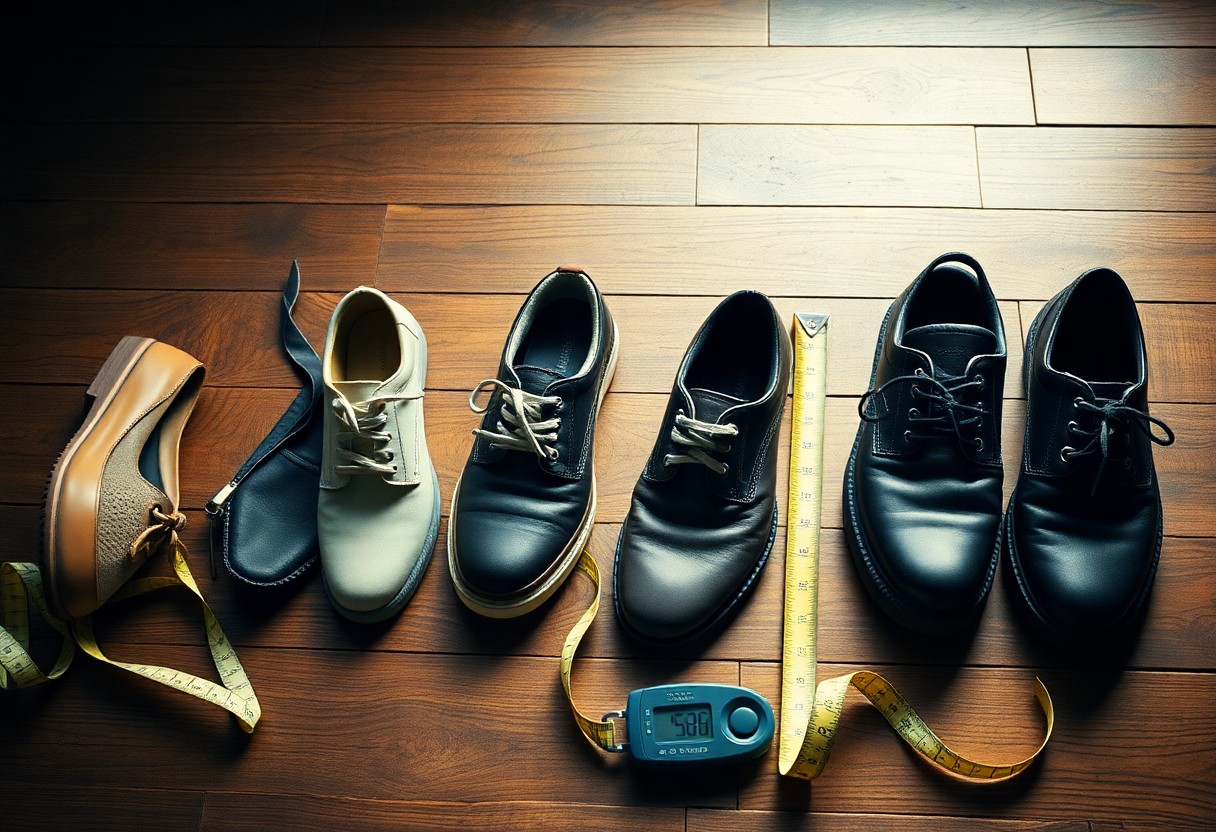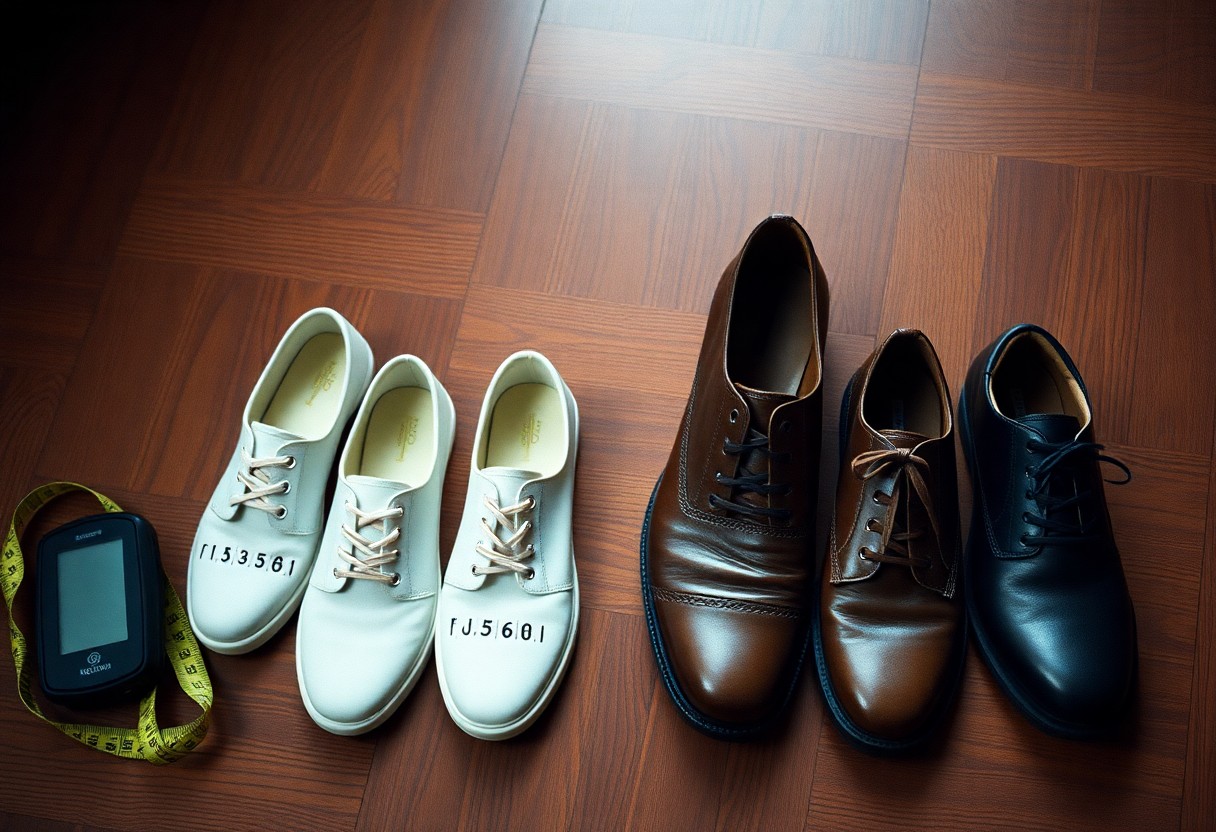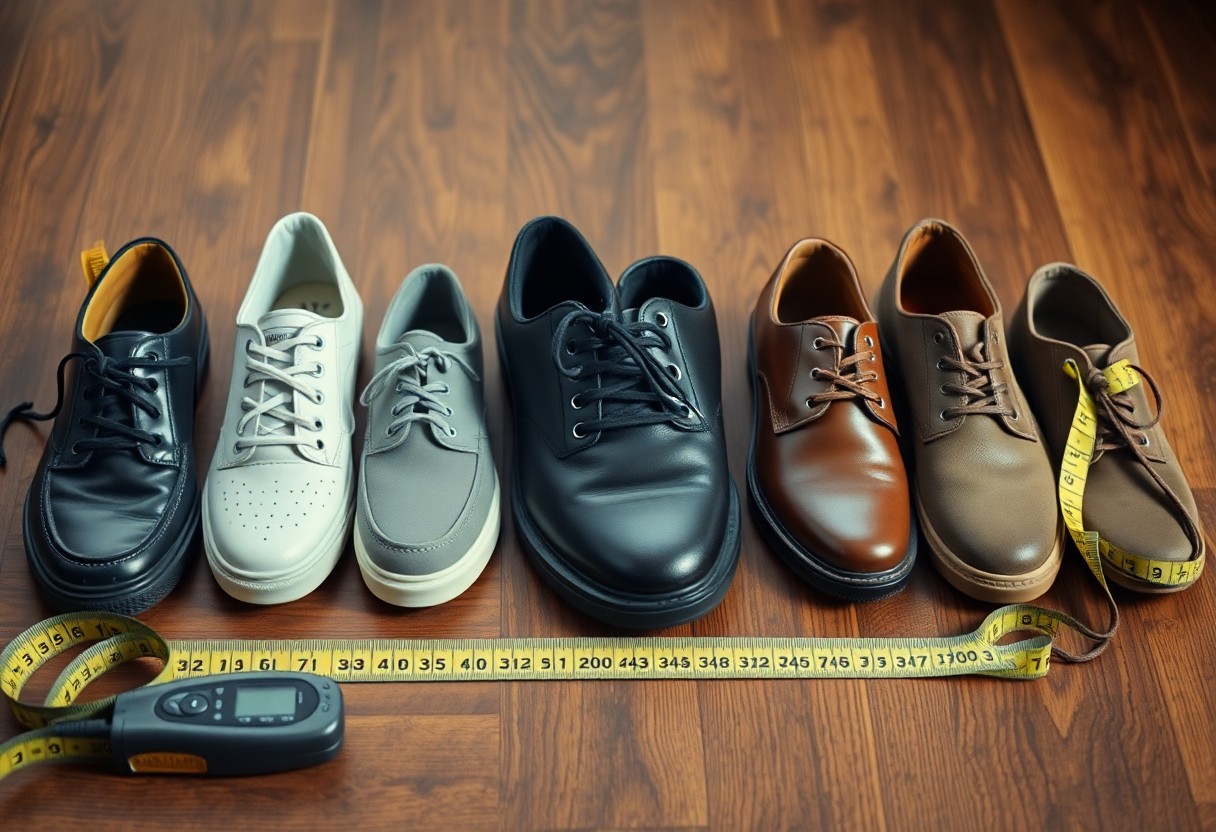
Understanding the significance of selecting shoes with the appropriate width is crucial for preserving your overall foot health and comfort. Wearing shoes that fit correctly can play a vital role in preventing foot pain, discomfort, and various health complications. When you shop for footwear, it’s essential to pay attention to both the length and width to achieve an ideal fit. Opting for shoes that have the correct width not only enhances your balance and blood circulation but also minimizes the risk of blisters and other common foot ailments. To identify your perfect shoe width, measure the broadest part of your foot and consult standardized width charts. Many shoppers mistakenly focus only on length, often overlooking the fact that proper width is equally critical for daily comfort and long-term foot health.
Mastering the Art of Measuring Your Feet for Optimal Shoe Fit
The most reliable way to determine your shoe width is to measure your feet at the end of the day when they tend to be slightly swollen. Your foot width can fluctuate by as much as half an inch throughout the day, making evening measurements the most accurate for finding the right fit. To do this, stand on a sheet of paper and trace around your foot, ensuring to capture your foot’s full shape. This simple yet effective technique can guide you in finding shoes that not only fit well but also provide the necessary comfort and support your feet require for daily activities.
Effective Techniques for Precise Foot Width Measurement
In addition to using a standard ruler, consider utilizing a Brannock Device, a specialized instrument commonly found in shoe stores that measures foot size accurately. This device allows you to measure the widest part of your foot, which is typically across the ball area. For the best results, ensure that you measure both feet while standing, as it is common for one foot to be slightly larger than the other. This practice helps you choose shoes that accommodate the larger foot, thereby preventing discomfort and potential foot issues during wear.
Common Pitfalls to Avoid When Choosing Shoe Width
One of the most common mistakes encountered when selecting shoe width is disregarding the importance of width measurements. Many individuals focus solely on the length, which can lead to discomfort and a range of potential foot problems. Other frequent errors include measuring feet while seated and mistakenly believing that your foot width remains constant throughout your life. It’s essential to understand that wearing shoes that are too narrow can result in serious foot complications, such as bunions, corns, and hammertoes. Foot size can change due to factors like weight fluctuations, pregnancy, or aging, which is why measuring your feet annually is recommended. Selecting the correct width can significantly help in avoiding blisters, calluses, and chronic foot pain.

Exploring Shoe Width Systems and Standards for an Ideal Fit
Becoming familiar with different shoe width systems is essential for ensuring foot comfort and overall health. Various brands and countries employ different measurement standards, so understanding these systems can aid you in selecting shoes that fit well and help avoid foot issues. By knowing how widths are categorized, you can make informed choices regarding footwear that meets your personal needs.
Understanding Letter-Based Width Scales for Better Shoe Fit
When shopping for shoes, you’ll commonly find widths labeled from AA to EE. For women, a standard medium width is B, while for men it is D. Narrow widths are classified from AA to B, while wide widths range from D to EE. This letter-based classification system is designed to assist you in identifying the right fit based on your unique foot shape, ensuring that your shoes feel comfortable and provide the support your feet need.
International Width Measurement Standards and Their Implications
When shopping in the global market, you may encounter various measurement systems. For example, European sizes are based on millimeters, while UK sizes adhere to their own width standards. Your US shoe size might differ from international measurements by one to two width sizes. Thus, it is critical to always refer to the brand’s size chart when purchasing shoes from abroad. Japanese shoes tend to be narrower, while European brands often feature a wider toe box. To guarantee the best fit, measuring your feet in millimeters provides the most accurate reference for international purchases.

Understanding How Shoe Construction Influences Fit and Comfort
To make informed footwear choices, it is essential to comprehend how shoes are constructed. The design and assembly of a shoe significantly impact how it fits and feels on your feet. Your comfort is largely influenced by the way the upper part of the shoe is connected to the sole and the flexibility of the materials surrounding the widest part of your foot. By opting for shoes with thoughtful construction, you can significantly enhance your overall comfort and foot support.
The Advantages of Natural Materials in Footwear
Shoes crafted from genuine leather offer exceptional breathability and adaptability. Leather possesses an inherent ability to stretch and mold to your foot’s unique shape over time, resulting in a personalized fit. Studies indicate that leather shoes can expand by up to 30% of their original width, making them an ideal choice for individuals with varying foot widths who prioritize comfort and flexibility in their footwear.
Durability and Consistency Offered by Synthetic Shoe Materials
Synthetic materials available in the market provide consistent width measurements and remarkable durability. These modern materials safeguard your feet while also offering water resistance and enhanced breathability. Many synthetic shoes now incorporate mesh panels that improve airflow and flexibility. Furthermore, advancements in synthetic materials have introduced comfort features such as memory foam and gel inserts, allowing shoes to combine stable width measurements with targeted cushioning, ensuring excellent support during wear. Recent studies reveal that synthetic materials can maintain their shape up to 40% longer than traditional materials, guaranteeing that your shoes keep their proper width throughout their lifespan.

Recognizing Signs of Proper Shoe Width for Enhanced Comfort
Unlike length, the correct shoe width is evident in how your feet feel and function within the shoes. Your footwear should allow your toes to spread comfortably while walking, with roughly half an inch of space at the widest part. Research shows that approximately 70% of individuals wear shoes that are improperly fitted in width, leading to various foot problems. Being able to identify the signs of proper width can significantly assist you in making better footwear choices.
Key Indicators of Comfort from Proper Shoe Width
Here are key signs that your shoes fit correctly in terms of width: your toes should have the ability to wiggle freely, the ball of your foot should align comfortably with the widest part of the shoe, and you should not experience any pinching on the sides. A well-fitting shoe allows your feet to expand naturally throughout the day, as feet can swell by up to 8% by evening.
Warning Signs Indicating Incorrect Shoe Width
While wearing your shoes, it’s crucial to remain vigilant for warning signs such as numbness or tingling in your toes, blisters on the sides of your feet, and pressure marks on your skin after removing your shoes. These symptoms suggest that your shoes may not be the appropriate width for your feet. Proper width is essential for maintaining foot health, as studies indicate that ill-fitting shoes can lead to long-term foot issues. You should feel no pressure points while standing or walking; if you notice pain, redness, or if your foot spills over the edges of the shoe, it’s time to consider a different width.
Understanding Width Variations Among Different Shoe Brands
Many shoe manufacturers offer a variety of width options, ranging from AA (super narrow) to 4E (extra wide). It’s important to recognize that foot width can vary throughout the day, and studies indicate that up to 70% of people have different widths between their left and right foot. Acknowledging these variations will help you select shoes that can accommodate your unique foot shape and prevent discomfort and potential foot complications.
The Influence of Brand Differences on Shoe Width Measurements
When comparing different brands, you may notice significant discrepancies in width measurements. A medium width in one brand may feel narrow in another. European brands typically run narrower than American brands, while athletic footwear companies often provide the most extensive width options. It’s always advisable to try on shoes before making a purchase, as sizes can vary considerably across manufacturers.
How Shoe Style Impacts Width Fitting
The style of the shoe plays a significant role in how width fits your foot. Athletic shoes generally offer more flexibility in width compared to dress shoes, while sandals are designed to accommodate a more natural width. Your foot width requirements may vary depending on the shoe’s intended use and the activities you plan to engage in. Further analysis shows that certain styles require specific width considerations. For instance, high heels necessitate a secure fit to prevent slipping, while work boots may need additional width to comfortably fit thicker socks. Running shoes should provide around half an inch of space between your longest toe and the shoe’s tip for optimal comfort and performance.
Identifying Special Width Requirements for Unique Foot Needs
While standard sizing options are available, some individuals may require specific width accommodations. If you have foot conditions such as bunions, flat feet, or experience swelling, you might need wider shoes. Additionally, your foot width can change throughout the day, with studies indicating a potential 4% increase in foot volume by evening. Recognizing these variations is crucial for selecting shoes that remain comfortable throughout your daily activities.
Foot Conditions Necessitating Special Width Accommodations
Special width requirements often arise from medical conditions. For individuals dealing with diabetes, arthritis, or edema, it is vital to have shoes that provide extra width allowance for proper circulation. Healthcare professionals may recommend specific width measurements to avoid complications associated with these conditions. Research indicates that 75% of individuals with foot conditions benefit from specialized width fittings, underscoring the importance of appropriate footwear choices.
Activity-Specific Width Needs for Enhanced Performance
An active lifestyle requires different shoe widths depending on the activities you engage in. For instance, your running shoes may require more width than your casual footwear, while hiking boots need space for accommodating thick socks. Athletes often benefit from shoes that are half a size to a full size wider for high-impact activities, allowing for necessary foot expansion during performance. When considering activity-specific fitting, it is important to think about your foot’s natural movement patterns. During running, your feet can spread up to half a size wider. For sports that require lateral movements, like tennis or basketball, having adequate width is essential to prevent foot strain and potential injuries. Your choices should reflect your activity level and unique foot characteristics.
Discovering Your Ideal Shoe Width for Lasting Comfort
The key to finding your perfect shoe width lies in understanding proper measurement techniques and the width options available. By measuring your feet at their widest point, knowing your designated width category (ranging from A to E), and selecting shoes that correspond with those measurements, you can ensure lasting comfort. Your shoes should fit snugly without causing pinching or slipping, allowing your toes the freedom to move naturally. By selecting the right width and choosing materials that suit your feet, you can enjoy comfortable, well-fitting footwear that supports your daily activities.
Common Questions Regarding Shoe Width
Q: How can I accurately measure my foot width at home?
A: To measure your foot width accurately, place your foot on a blank sheet of paper and trace its outline. Measure the widest part, typically at the ball of your foot, using a ruler. It’s advisable to take measurements in the afternoon when your feet are at their largest. Don’t forget to measure both feet, as one may be wider than the other. Use these measurements to compare with the shoe width charts provided by different manufacturers.
Q: What are the standard width measurements for shoes?
A: Shoe widths generally use letter codes from A to E. For women, the standard medium width is B, while for men, it’s D. Narrow widths are indicated by A and AA, while C and D show medium-wide for women. E and EE represent wide widths. Keep in mind that each brand may have slight variations in their width measurements, so it’s wise to consult their specific size charts before making a purchase.
Q: How can I tell if my current shoes have the wrong width?
A: Look for these signs: red marks on the sides of your feet, numbness in your toes, blisters on your heels or sides, and shoes that slip off while walking. Your toes should have sufficient space to wiggle freely, and the ball of your foot should fit comfortably at the widest part of the shoe. If you feel pressure on the sides, it’s time to consider a wider shoe. Conversely, if your foot moves side-to-side, you may need a narrower width.
The Article How to choose the right shoe width tips for a comfortable fit appeared first on My Shoes Finder
The Article Choosing the Right Shoe Width for Ultimate Comfort Was Found On https://limitsofstrategy.com


Comments are closed